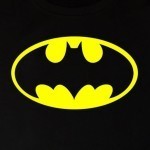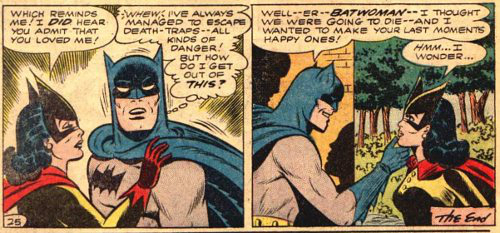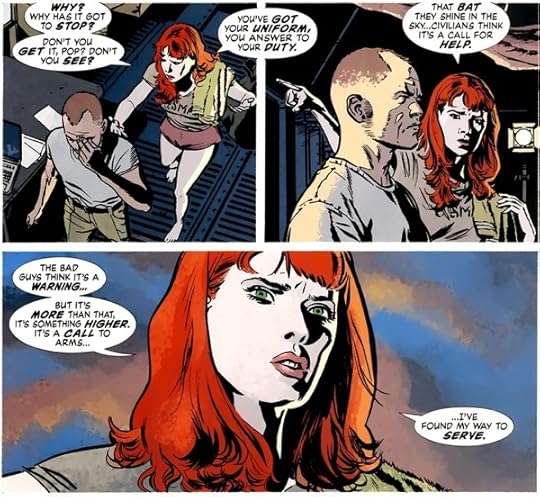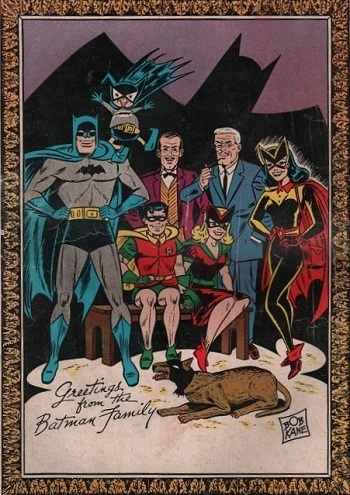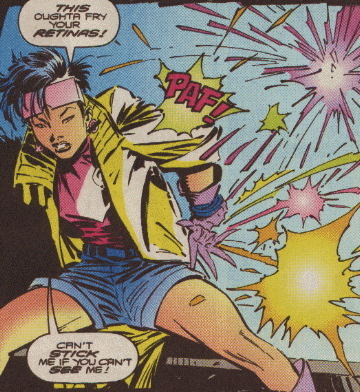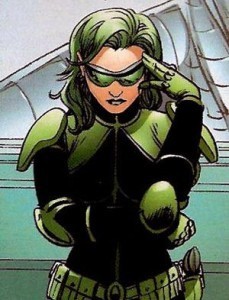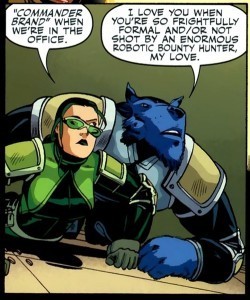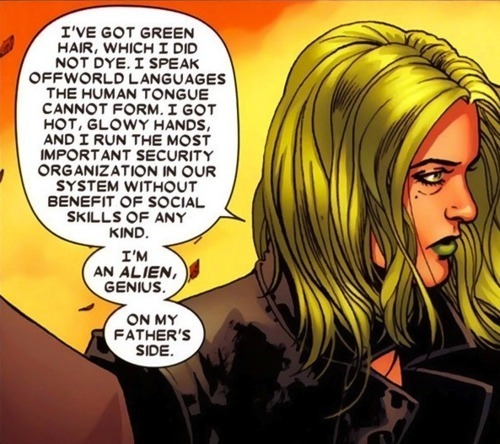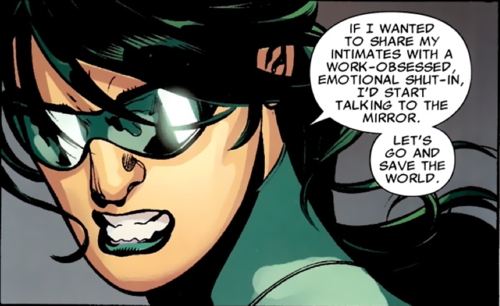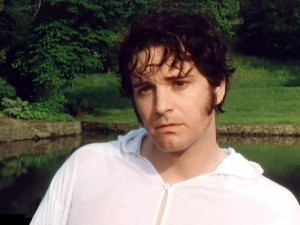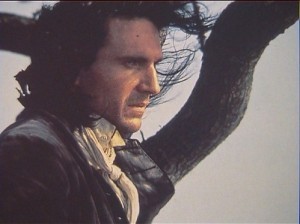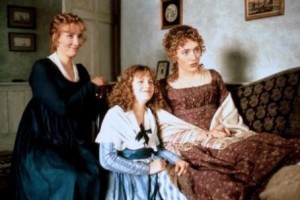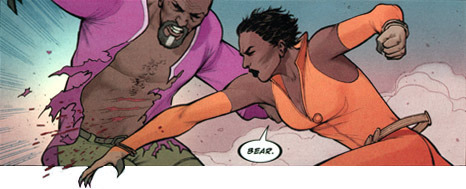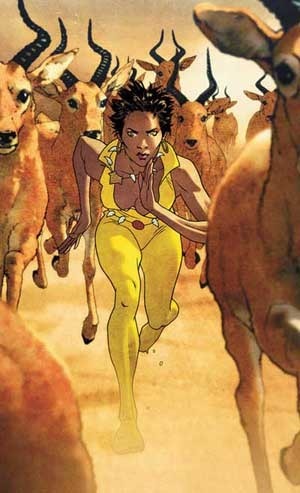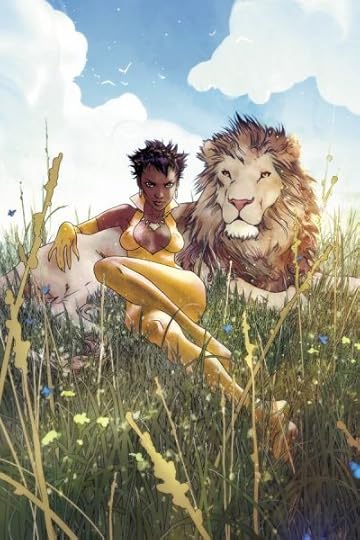Tansy Rayner Roberts's Blog, page 105
July 30, 2012
Where the Wonder Women Are: #11 Catwoman
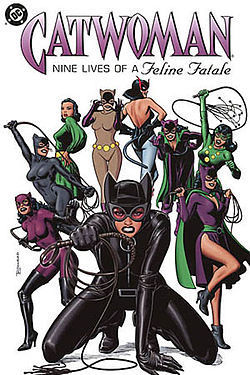 Currently prowling around on stiletto (actual knife) heels on the big screen in The Dark Knight Rises, Catwoman is probably second only to Wonder Woman when it comes to female characters from superhero comics who have an iconic, recognisable status outside the world of comics readers. As with Wonder Woman, this is helped along quite considerably by a 1960’s TV show, a series of sexy outfits, and a whole bunch of nostalgia, though Catwoman also has the benefit of several appearances in big budget films over the last twenty years.
Currently prowling around on stiletto (actual knife) heels on the big screen in The Dark Knight Rises, Catwoman is probably second only to Wonder Woman when it comes to female characters from superhero comics who have an iconic, recognisable status outside the world of comics readers. As with Wonder Woman, this is helped along quite considerably by a 1960’s TV show, a series of sexy outfits, and a whole bunch of nostalgia, though Catwoman also has the benefit of several appearances in big budget films over the last twenty years.
Catwoman has been played on screen by many different actresses, including Julie Newmar, Eartha Kitt, Michelle Pfieffer, Halle Berry and Anne Hathaway. But while the television and Hollywood versions of Catwoman are often almost entirely different from each other, you can also see some pretty dramatic differences in the way she, her story and her costume are presented in the comics.
Catwoman, AKA Selena Kyle, first appeared in Batman comics in 1940, as a glamorous cat burglar who led Batman a merry dance. Her femme fatale status was helped along by a design based on images of Jean Harlow and Hedy Lamarr, though it has to be admitted that her first crimefighting costume, involving an actual furry cat mask, was less than seductive. She soon made up for that, committing her crimes in a designer purple evening dress and cape, and sighing breathily at Batman whenever he looked like getting tough with her. Wielding a whip, this classy bad girl intrigued Batman, and he would at times deliberately let her escape.
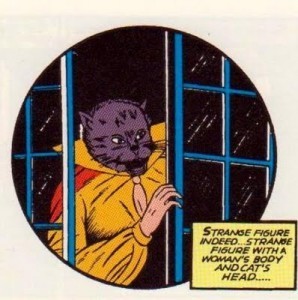 There was a storyline about how Catwoman was really an air stewardess who had only turned to crime after a blow to the head, but this was quickly covered over and ignored. Sometimes a girl’s just gotta steal diamonds, you know?
There was a storyline about how Catwoman was really an air stewardess who had only turned to crime after a blow to the head, but this was quickly covered over and ignored. Sometimes a girl’s just gotta steal diamonds, you know?
Disappearing in the mid-50’s for a decade or so because she really didn’t fit the new Comic Code’s rules for the behaviour of female characters, Selina Kyle returned again in the mid-60’s, continuing to flirt and romance Batman as well as coming up with sinister criminal schemes. She also made appearances in Lois Lane: Superman’s Girlfriend, as did many other female characters.
In a publishing world where female superheroes are often created as feminised versions of a popular male character, it’s worth noting that Catwoman has a male counterpart, Catman, who was created in response to her character in the 1960’s. He was treated like a bit of a joke for many years, but was recreated quite brilliantly by Gail Simone who wrote him into in her Secret Six title a few years ago.
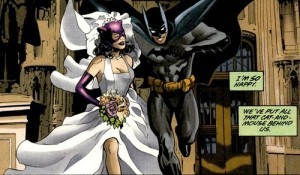 In the 1970’s the idea that Selina Kyle was not only Batman’s love interest but his perfect match was cemented by the development of Earth 2, an alternate world in which Batman and Superman were actually the age they should be based on their original appearances in comics. In Earth 2, Bruce Wayne and Selina Kyle had married in the 1950’s after she gave up crime for good – they now had an adult daughter, Helena Wayne, who only discovered her mother’s past after she was blackmailed by former colleagues into returning as Catwoman one last time. Selina was killed thanks to Batman hitting one of her blackmailers at the wrong moment, and once the truth came out, Helena took up the slack from her retired father and created her own superhero identity, the Huntress.
In the 1970’s the idea that Selina Kyle was not only Batman’s love interest but his perfect match was cemented by the development of Earth 2, an alternate world in which Batman and Superman were actually the age they should be based on their original appearances in comics. In Earth 2, Bruce Wayne and Selina Kyle had married in the 1950’s after she gave up crime for good – they now had an adult daughter, Helena Wayne, who only discovered her mother’s past after she was blackmailed by former colleagues into returning as Catwoman one last time. Selina was killed thanks to Batman hitting one of her blackmailers at the wrong moment, and once the truth came out, Helena took up the slack from her retired father and created her own superhero identity, the Huntress.
 The glamorous, classy femme fatale version of Catwoman was substantially revised in the 1980’s with the release of Frank Miller’s Year One, a hardboiled take on Batman’s origin story. Selina was now portrayed as a prostitute who turned to burglary (first out of need, later out of a Robin Hood sensibility) and was inspired to be ‘the Cat’ after seeing ‘the Bat’ in action.
The glamorous, classy femme fatale version of Catwoman was substantially revised in the 1980’s with the release of Frank Miller’s Year One, a hardboiled take on Batman’s origin story. Selina was now portrayed as a prostitute who turned to burglary (first out of need, later out of a Robin Hood sensibility) and was inspired to be ‘the Cat’ after seeing ‘the Bat’ in action.
This version of Catwoman has been largely carried forward into the present day, with occasional twists and turns. While her new origin at least includes some strong female characters, especially her young sidekick and friend Holly Robinson, and her crazy nun sister Maggie, it seems as if many writers have been in some kind of competition as to how dark, seedy and traumatised they can make Selina’s backstory, which has at various times also included parental abuse, alcoholism, drug addiction, orphanages, violence and the Mob.
Catwoman was particularly prominent in the 90′s after Michelle Pfeiffer’s performance in the big screen movie Batman Returns, and she featured in the various Batman animated series as well as appearing in many comics and her own series, sporting many different costumes. She also became a semi-regular member of the Birds of Prey team book alongside a new version of the Huntress (no longer her daughter).
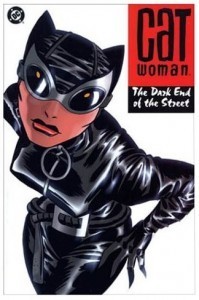 For a large part of the 2000’s, Catwoman was written by Ed Brubaker, who combined pulp style detective stories with this more “street” version of Selina Kyle, notably in her ongoing Catwoman series, which sets her up mostly as a vigilante trying to go “straight” but often throws in a bit of cat burglary for old time’s sake. Her costume also changed quite notably at this time with a catsuit & goggles combination that has been reflected across other media and is generally regarded now as her iconic look. While having her own series removes Selina somewhat from the Batverse, the on again, off again nature of her romance with Bruce Wayne had continued to be an occasionally important element of her character (and of his).
For a large part of the 2000’s, Catwoman was written by Ed Brubaker, who combined pulp style detective stories with this more “street” version of Selina Kyle, notably in her ongoing Catwoman series, which sets her up mostly as a vigilante trying to go “straight” but often throws in a bit of cat burglary for old time’s sake. Her costume also changed quite notably at this time with a catsuit & goggles combination that has been reflected across other media and is generally regarded now as her iconic look. While having her own series removes Selina somewhat from the Batverse, the on again, off again nature of her romance with Bruce Wayne had continued to be an occasionally important element of her character (and of his).
During the Infinite Crisis time jump (followed up in One Year Later), Selina had a baby named Helena, and it was regularly hinted that Bruce might be the father, though a storyline revolved around the other most likely father of her child. Holly Robinson briefly took on the role of Catwoman during Selina’s early motherhood, but Selina ended up choosing to give Helena up for adoption to keep her safe, and took back her goggles afterwards.
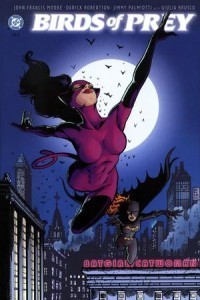 As well as Birds of Prey, Catwoman has appeared with several teams such as the Outsiders and the Gotham City Sirens, though she tends to end up in teams with similarly lawless characters – Birds of Prey was really her only time hanging out excessively with the goody goody set. She is particularly associated with two other Batman villainesses, Poison Ivy and Harley Quinn, but her individuality often leads her to take her own path and besides, the two of them can be really annoying. The current ‘outside continuity’ Ame-Comi series shows Catwoman as the voice of cynical reason in a team of super villains led by Duella Dent, changing sides to help Batgirl.
As well as Birds of Prey, Catwoman has appeared with several teams such as the Outsiders and the Gotham City Sirens, though she tends to end up in teams with similarly lawless characters – Birds of Prey was really her only time hanging out excessively with the goody goody set. She is particularly associated with two other Batman villainesses, Poison Ivy and Harley Quinn, but her individuality often leads her to take her own path and besides, the two of them can be really annoying. The current ‘outside continuity’ Ame-Comi series shows Catwoman as the voice of cynical reason in a team of super villains led by Duella Dent, changing sides to help Batgirl.
Catwoman also has her own title in the New 52, which continues the idea of Selina as a streetwise vigilante type in a catsuit and goggles, who knows how to frock up in heels and a fake wig when necessary. However, this is shown to be a younger version of her character from earlier in her career, something which is difficult to reconcile in the hit-and-miss reboot, as Batman himself has kept most of his continuity and history, and has not been noticeably youthened.
The New 52 Catwoman raised controversy from its first issue, which used a great deal of voyeuristic “T & A” art to prove how sexy she was, and showed her relationship with Batman as a crude, just-for-sex arrangement rather than the more complex emotional history shown in the past. Personally I got cranky that Lola, the awesome female supporting character who really did help show Selina as a person instead of just a vehicle for boobs-in-catsuit was horribly killed off a few issues in. More recently, cover art for the upcoming Catwoman #0 was lampooned across the internet for defying physics in its gratuitous display of her body. The title has come to represent some of DC Comics’ most problematic attitude towards women in comics, to the point of becoming a running joke. Considering the long history and iconic nature of Catwoman as a character, that’s pretty sad.
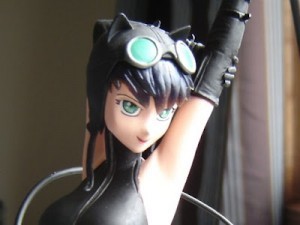 The Ame-Comi version of Selina is far more awesome, and I hope she gets her own mini-series. But what of the other Catwomen, the ones experienced by fans who don’t read comics?
The Ame-Comi version of Selina is far more awesome, and I hope she gets her own mini-series. But what of the other Catwomen, the ones experienced by fans who don’t read comics?
Julie Newmar made Catwoman an iconic and memorable character in the Batman TV Show of 1966, the same year that Catwoman returned to comics after a decade out of the spotlight. The influence of this high camp adventure series may be waning as the years pass, as it isn’t widely available on DVD for a new generation to experience, but Newmar and her black catsuit still has a strong nostalgia hold over viewers of the original series. This Catwoman was portrayed as a costumed antagonist to Batman, but her alter ego was never named.
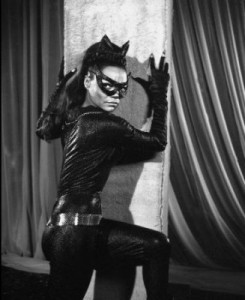 Due to Newmar’s unavailability, Lee Merriwether played the part in the Batman film, and Eartha Kitt took over the role for three episodes in the third season of the series.
Due to Newmar’s unavailability, Lee Merriwether played the part in the Batman film, and Eartha Kitt took over the role for three episodes in the third season of the series.
Another old school version of Catwoman appeared in the short-lived live action Birds of Prey TV series in 2002, which featured the Earth 2 version of Helena Wayne as a protagonist, and thus depicted Catwoman as her mother in the opening credits and occasional flashbacks.
In Batman: The Animated Series in the 1990’s, Catwoman was likewise depicted as an “old school” catburglar who liked shiny things, wearing a grey and black catsuit (with actual cat ears and claws) on the job, and revealing long blonde hair out of costume, almost certainly in response to Michelle Pfeiffer’s iconic Hollywood take on the role. The various animated series that followed on from this later revised her character to have the dark hair familiar from comics. Batman: The Brave and the Bold of very recent years has put Selina into a costume based on her classic 1950’s ensemble (which also made a comeback in the 80′s), a purple dress with green cloak and purple mask.
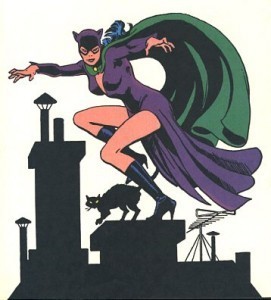 I’ll admit that I’m an old school fan when it comes to Selina Kyle, and this version of the character makes me happiest.
I’ll admit that I’m an old school fan when it comes to Selina Kyle, and this version of the character makes me happiest.
The Tim Burton directed, Michelle Pfeiffer version of Catwoman in Batman Returns, was based on almost nothing from any the original comics. A nervous and frumpy secretary who is treated by a doormat by her boss, this Selina is pushed out of a window when she discovers the evil schemes of said boss. She is then licked by cats, who bring her back to life. YES REALLY.
After constructing an admittedly fabulous catsuit from a whole lot of PVC on her home sewing machine, this revived woman takes on the identity of a Catwoman and hurls herself around Gotham City, making up for her previous repression with an angry yet stylish feminist rampage. While getting her revenge on her murderer is something of a priority, Selina is distracted from her Catwoman antics by Batman, who fascinates her, and she begins a romantic relationship with him as a new glamorous version of herself. Because being licked by cats really helps your poise and flirtation skills.
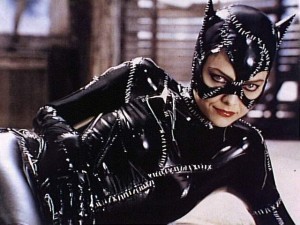 Catwoman does avenge her own “death” at the end, and is shot several times, but her superstition about cats having nine lives is proved correct. The whole story makes little to no sense, but it’s hard to argue with Pfeiffer’s electric performance. For many years it was suggested that she return in her own movie, but in fact when Catwoman made it to screens in 2004 it was… something else.
Catwoman does avenge her own “death” at the end, and is shot several times, but her superstition about cats having nine lives is proved correct. The whole story makes little to no sense, but it’s hard to argue with Pfeiffer’s electric performance. For many years it was suggested that she return in her own movie, but in fact when Catwoman made it to screens in 2004 it was… something else.
The character portrayed by Halle Berry in the 2004 movie Catwoman is even less reminiscent of any previous version of the character. Except for the bit where a woman is horribly murdered (in this case by sewage) and licked by cats who bring her back to life with special cat powers. Yes, again.
No, I don’t recommend anyone use ‘licked by cats’ as a valid method of body revival.
Egyptian mythology is used as an excuse for this story. It’s nice to know there is SOME kind of excuse. But apart from a couple of brief but entertaining scenes in which Berry unconsciously takes on the personality of a cat and clambers around on a couch, the entire movie is a waste of everyone’s time. Did I mention the plot is about a cosmetics company? That’s to keep the ladies happy. The gentlemen, of course, are supposed to watch entirely because of the atrocious pornoriffic costume designed for Berry. Instead, everyone chose to stay away in droves, and good for them.
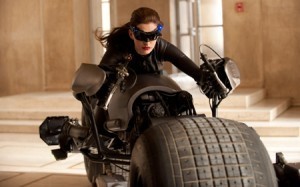 I can’t comment on the Anne Hathaway version of Catwoman in the new film Batman Rising, as I haven’t seen it yet, but everything I have heard suggests that various elements from the comics and origins of the character have actually been at least consulted in the creation of this character, and that Catwoman fans both old and new school should find something to enjoy about the script as well as Hathaway’s performance. I choose to believe this is true. Anything less would be deeply, deeply depressing.
I can’t comment on the Anne Hathaway version of Catwoman in the new film Batman Rising, as I haven’t seen it yet, but everything I have heard suggests that various elements from the comics and origins of the character have actually been at least consulted in the creation of this character, and that Catwoman fans both old and new school should find something to enjoy about the script as well as Hathaway’s performance. I choose to believe this is true. Anything less would be deeply, deeply depressing.
Where the Wonder Women Are:
0: Introduction
1: Black Canary
2: Rogue
3: Hawkgirl/Hawkwoman
4: Black Widow
5: Wonder Girl
6: Captain Marvel
7: Vixen
8: Abigail Brand.
9. Jubilee
10. Batwoman
The Art of Not Writing
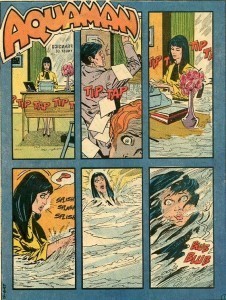 Having reached the end if not a complete blitz then at least a consistent 6 weeks of hitting writing targets, my current plan is to hone my skills of not-writing.
Having reached the end if not a complete blitz then at least a consistent 6 weeks of hitting writing targets, my current plan is to hone my skills of not-writing.
It’s easy as a writer to get caught up in metrics – word count means progress, books only get written if you regularly put your bum in your seat and type, etc. etc. Those things are true. But it’s also important to recognise when you’re drained and need to refill the well – and particularly when you’re pushing too hard at a book.
For me, it becomes obvious when the writing is hard. Writing is not always easy for me, and writing every day is certainly not easy, with my intense time pressures. But while I am proud of a lot of the work I did over the last six weeks, both on my novel-in-progress and other projects, I can’t deny the fact that I never kicked into that stride, the beautiful momentum that usually fires up after a consistent month or so of writing.
The point at which the words fly, and the story becomes fierce, and the words fall out of my fingers. That never happened. Writing 1000 words five times a day was possible, sometimes really tough, sometimes a bit more achievable, but my brain never actually got to the point of exploding messily all over the page.
And that means there’s something wrong. Not wrong wrong, but not right, either.
So it’s time to rest. To not write – on the novel, at least. To not prioritise word count. To allow myself to feel productive even if I’m not hitting a target each week.
I need to research all manner of things about the Victorian era. I need to read a bunch of gothic novels. I need to spend some serious time without my laptop open, allowing the various slight problems/gaps in my story to work themselves out. As Lucy March and Jenny Crusie would say, I need to let the girls in the basement do some of the work.
It’s a trick, obviously. Because what I’m hoping is that forcing myself to not-write will refuel my novel and my creative juices, until they both sneak up on me and drag me back to their cave. I want the next time I write be because I’m hurting to write, because the story is screaming its way out of my head. And I’m really hoping that taking this not-writing period means that I will sneakily end up ahead of myself, because the next bout of writing will come faster.
It also wouldn’t hurt to spend more time on family issues, on planning for Jem’s birthday (THREE) and actually doing parent help at Raeli’s school, and cleaning the damn house. But the danger of course is how easy it is to get swept up in the domestic, in all the little jobs that have to be done, and to lose what writing muscles I have all over again.
There’s a difference between not writing and Not Writing. There’s also a difference between lounging around in front of the Olympics, and Productive Thinking Time. The clever thing is figuring out what that difference is.
July 29, 2012
Where the Wonder Women Are: #10 Batwoman
Batman is one of the most popular and iconic superheroes of all time, and while the version of the character we see today is usually portrayed as a gravelly-voiced loner, he’s a loner with a whole bunch of people in his life. Gotham City and Batman’s personal community have spawned a huge number of characters who are vivid and interesting, and have taken on lives of their own beyond the Batman titles. Not only do his sidekicks have a habit of growing up and developing their superhero identities as they age, but so do the villains, cops and random strangers who cross his path.
It’s like he’s walking around in one big dark violent dimly lit soap opera.
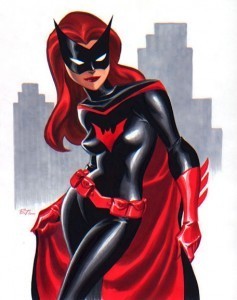 One of the side benefit of the rich and detailed Batverse is that a large number of interesting female characters have arisen in Gotham City. Like Wonder Woman herself, these women are not always written awesomely, and are not always drawn awesomely, and sometimes they’re not even allowed to be fully dressed in public, and yet somehow they ALL manage to be awesome.
One of the side benefit of the rich and detailed Batverse is that a large number of interesting female characters have arisen in Gotham City. Like Wonder Woman herself, these women are not always written awesomely, and are not always drawn awesomely, and sometimes they’re not even allowed to be fully dressed in public, and yet somehow they ALL manage to be awesome.
Even the ones created purely for the animated series.
There are indeed so many that I could write about nothing but women of Gotham City for a month or more. Which I won’t do. At least, not this month. But because of all the mask and name swapping that goes on in this city, and the way that so many of their stories and identities are intrinsically wrapped up in each other, I wanted to tackle a particular group all at once, in one glorious Batweek. So this week I’ll be looking at Batwoman, Catwoman, Robin, Huntress and Batgirl. Which actually adds up to about 75 separate people, so it’s enough to be going on with.
Here we go!
The original Batwoman, or rather, Bat-woman, was devised in 1956, quite literally to prove that Batman and Robin weren’t gay for each other. Kathy Kane was set up as if she was going to be an actual rival and romantic challenge for Batman, but the full weight of 1950’s style femininity and a certain powerful Comics Code meant that she spent more time worrying about whether Batman liked her, and which handbag (I’m sorry, utility purse) would look prettiest with her motorbike. Batman bullied Kathy into ceasing her superhero antics by following her home and telling her that if he could figure out her secret identity, anyone could.
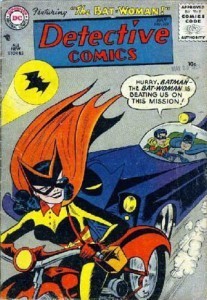 Kathy went quietly away, but rallied later, proving herself worthy enough to hang out with the boys on occasion. She even acquired her own girl sidekick, Bat-Girl, AKA her cousin Betty Kane. When the two of them teamed up with Batman and Robin, it looked a lot like a double date, which was basically the effect that the creators had been going for. But along with Bat-Mite and the Bat-Hound, Bat-Woman and Bat-Girl were written out in 1964 in an attempt to make the lifestyle of the Dark Knight seem less like an amusing sitcom.
Kathy went quietly away, but rallied later, proving herself worthy enough to hang out with the boys on occasion. She even acquired her own girl sidekick, Bat-Girl, AKA her cousin Betty Kane. When the two of them teamed up with Batman and Robin, it looked a lot like a double date, which was basically the effect that the creators had been going for. But along with Bat-Mite and the Bat-Hound, Bat-Woman and Bat-Girl were written out in 1964 in an attempt to make the lifestyle of the Dark Knight seem less like an amusing sitcom.
It’s pretty rare for a character to completely disappear in the DC universe, but Bat-Woman managed it. The much trendier and more massively popular Batgirl (Barbara Gordon) joined Batman and Robin in the 60’s, and was for decades the only woman to wear a bat symbol (though in one story she did meet her predecessor). When Crisis of Infinite Earths rebooted DC continuity in 1985, Kathy Kane was declared to never have existed. Harsh!
20 years later, another DC Reboot, Infinite Crisis, apparently reinstated Kathy (sometimes referred to as Katy) Kane as both the Batwoman, and a romantic interest in Batman’s past, but only in quite fleeting references and flashbacks. All of this was a red herring in any case, because immediately after Infinite Crisis, the maxi-series 52 introduced a new Batwoman, probably one of the most iconic and successful new characters to be launched in the DC universe in the last decade.
Her name was Kate Kane, and she really didn’t fancy Batman.
BATWOMAN #2 – Kate Kane
The design for this new Batwoman was striking – the use of black, red and white was used to give her an iconic and almost violent look, and while she was every bit as conventionally super-glamorous as every other comic book heroine, there was something about her that made her seem less like an object of desire, and more like someone who was doing her damn job.
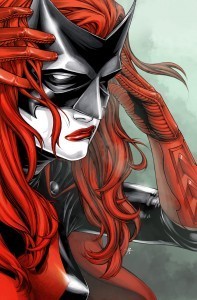 Kate Kane was introduced in 52 as a fully formed character who had been working as a vigilante for some time – her origin and motivations were revealed later through flashbacks in Detective Comics. Her arrival was marked by a huge amount of media attention, even making the television news, largely because of the announcement that she was a lesbian. While not the first gay superhero, she quickly became one of the most recognisable gay superheroes, thanks to the bat on her chest and the pop culture coverage.
Kate Kane was introduced in 52 as a fully formed character who had been working as a vigilante for some time – her origin and motivations were revealed later through flashbacks in Detective Comics. Her arrival was marked by a huge amount of media attention, even making the television news, largely because of the announcement that she was a lesbian. While not the first gay superhero, she quickly became one of the most recognisable gay superheroes, thanks to the bat on her chest and the pop culture coverage.
Despite the violence in Kate’s past, there’s nothing irrational about her decision to serve – indeed, her history shows she was heading towards a career in the military before her sexuality (and her refusal to lie about it) caused her to be kicked out of school.
Along with Renee Montoya, a former lover and member of the Gotham PD (who later became a superhero herself, taking on the identity of the Question), Kate was one of the central characters of the 52 series, a weekly title that chronicled in “real time” a year in which Superman, Batman and Wonder Woman were all missing in action from the DC Universe.
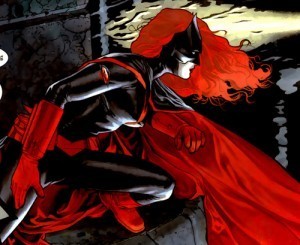 Batwoman proved to be far more than a newsworthy gimmick, and her character resonated with readers. After 52 she was set up as the lead character in the famous Batcentric title Detective Comics (as in, where the name DC comes from) for a story arc written by Greg Rucka and published in trade paperback as “Batwoman: Elegy.” She was the only female character of Gotham City not to be massively rebooted (or indeed rebooted out of existence) in the recent New 52 shake-up at DC Comics.
Batwoman proved to be far more than a newsworthy gimmick, and her character resonated with readers. After 52 she was set up as the lead character in the famous Batcentric title Detective Comics (as in, where the name DC comes from) for a story arc written by Greg Rucka and published in trade paperback as “Batwoman: Elegy.” She was the only female character of Gotham City not to be massively rebooted (or indeed rebooted out of existence) in the recent New 52 shake-up at DC Comics.
However, the various Batman-related animated series, which normally do such a good job of representing women from the comics, have not done their best work when it comes to Batwoman. Instead of portraying a slightly less blood-and-guts version of Kate Kane’s character, they have chosen to give her different secret identities, presumably so as not to deal with the lesbian aspect.
Kate is a dark, fiercely independent character, and it’s notable that her entire supporting cast in the new series, including her sidekick, love interest and main nemesis, are all women. While she wears the bat with pride and is deeply entrenched in Gotham City as a setting, she also feels far more independent from Batman and his ongoing storylines as do any of the other spin-off characters from his various series.
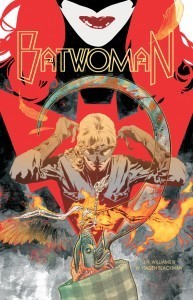 This Batwoman also has a young cousin, Bette Kane, based on the original Bat-Girl. Bette had actually been restored to the DC Universe as “Flamebird” some years earlier, featuring in some Teen Titans and Young Justice comics, and it’s nice that she was reunited with her cousin, even if the Batwoman series has continued the irritating character arc for Bette that she’s one of those superheroes who doesn’t have what it takes (really, we could do without one of those storylines for the next forty years, if that’s okay with everyone else) There was recent outcry for a disappointing storyline in which Flamebird was badly beaten and left for dead in order that Kate should feel bad about herself, and much discussion as to whether it counts as “Women in Refrigerators” or not. But Bette is still alive, at least!
This Batwoman also has a young cousin, Bette Kane, based on the original Bat-Girl. Bette had actually been restored to the DC Universe as “Flamebird” some years earlier, featuring in some Teen Titans and Young Justice comics, and it’s nice that she was reunited with her cousin, even if the Batwoman series has continued the irritating character arc for Bette that she’s one of those superheroes who doesn’t have what it takes (really, we could do without one of those storylines for the next forty years, if that’s okay with everyone else) There was recent outcry for a disappointing storyline in which Flamebird was badly beaten and left for dead in order that Kate should feel bad about herself, and much discussion as to whether it counts as “Women in Refrigerators” or not. But Bette is still alive, at least!
Batwoman is the closest we have ever come to having a female equivalent of Batman – like Bruce Wayne, Kate Kane is an independently wealthy socialite with intense martial arts training and no actual superpowers. She is a vigilante because of a painful family tragedy, and she keeps a sharp boundary between her life as Kate and her life as Batwoman – indeed, the amazing art that characterises her series shows a markedly different style on the page depending on which character she is inhabiting. She does represent diversity, though, through her Jewish heritage as well as her sexuality, and it’s nice that the team behind the creation of her character felt that these were important aspects to add to the Batfamily.
A hard-hitting, contemporary hero for the 21st Century, Batwoman’s ongoing series was recently announced as the bestselling of the first wave of New 52 trade paperbacks, an amazing achievement for a comics title featuring a female protagonist. This is an encouraging success story in an industry that doesn’t always do right by its female characters, and I thoroughly recommend the series!
Where the Wonder Women Are:
0: Introduction
1: Black Canary
2: Rogue
3: Hawkgirl/Hawkwoman
4: Black Widow
5: Wonder Girl
6: Captain Marvel
7: Vixen
8: Abigail Brand.
9. Jubilee
July 27, 2012
Challenge Completed! Clarion Write-a-thon Week 6.
 I’ve written 30,000 words in the last six weeks, thanks to the Clarion Write-a-thon. I’m past the halfway point of my steampunk YA novel, I’ve progressed a bunch of other writing projects, and I’ve kept up the reasonable momentum of this year. Nothing is FINISHED though, so I’m still feeling a bit aimless.
I’ve written 30,000 words in the last six weeks, thanks to the Clarion Write-a-thon. I’m past the halfway point of my steampunk YA novel, I’ve progressed a bunch of other writing projects, and I’ve kept up the reasonable momentum of this year. Nothing is FINISHED though, so I’m still feeling a bit aimless.
Still before I disappear into Olympics fever (somehow we got talked into an opening ceremony party this afternoon, have no idea how that happened), it’s important to stop and celebrate what I did achieve. I’m at over 90,000 words of fiction for the year. I’m doing great.
My plan for the next couple of weeks is to not put any pressure on myself writing-wise in order to focus on some spring cleaning, party planning for a certain little girl who is turning three early in August, and to allow myself the research time I’ve been craving for this book. Victoriana reading ahoy! Among other things, I’m planning to finally get around to Rebecca.
I’ve been enjoying writing my Where Are the Wonder Women posts and have decided to tackle one of the more complex and entwined collections of characterisation/backstory involving female superheroics with one big, glorious Batweek starting on Monday and featuring Batwoman, Catwoman, Huntress, Robin and Batgirl.
So that will do to be going on with.
====
Thanks everyone who sponsored me during the Clarion Write-a-thon! It’s not too late to Paypal a small donation to help the running costs of the Clarion writers workshops, either in my name or that of some other participant.
Where the Wonder Women Are: #9 Jubilee
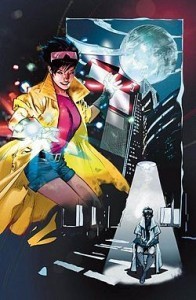 So… whatever happened to Jubilation Lee?
So… whatever happened to Jubilation Lee?
Like Rogue, Jubilee is one of my favourite characters from the old X-Men cartoon. She is the point of view character for the audience in the first episode, who overhears her adoptive parents giving her up to the authorities for being a mutant, and goes on the run – only to be found and taken in by the X-Men. I recently came across Jubilee’s debut appearance in the X-Men comics, and was delighted to see how many elements of that issue were used in the cartoon itself, including her flight through a mall, pursued by the robotic giant Sentinels.
Hardly surprising that there were points of similarity between the comics and the series, as Jubilee was launched as a character in 1989, only three years before the cartoon was created, and was thus still fresh and unsquashed by a decade or more of continuity like her peers. The main difference in her origin story was that in the comics, her parents had been killed before she went on the run.
A cheeky, irreverent Chinese-American gymnast, Jubilee’s superpower was to create sparkly fireworks (or explosive plasma) from her hands, which allowed her to blow stuff up. With style. Her style also included a violently bright yellow and pink ensemble of clothes, which looked pretty awesome in the early 90’s, possibly.
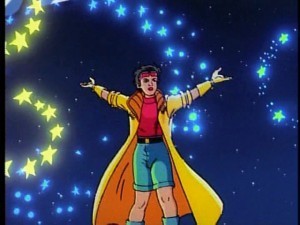 She joined the X-Men (in the comics) at a time when they were living in a secret base in outback Australia (yes, really) and has a particular attachment to Wolverine who has taken something of a parenting role with her. You know, for a rebellious loner it’s amazing how many characters Wolverine has mentored over the years!
She joined the X-Men (in the comics) at a time when they were living in a secret base in outback Australia (yes, really) and has a particular attachment to Wolverine who has taken something of a parenting role with her. You know, for a rebellious loner it’s amazing how many characters Wolverine has mentored over the years!
Unlike Rogue, I never located much Jubilee material after the animated series. She didn’t seem nearly as prominent a character in the comics, and didn’t appear at all in many of the later cartoons or the movies (okay she is technically in the movies but barely even a cameo or two). I always wondered what happened to her.
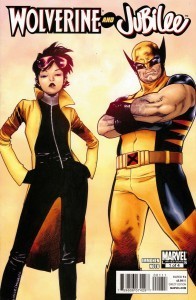 Then I happened across a recent graphic novel, Wolverine and Jubilee, written by Kathryn Immonen and thought, oh cool, I get to find out!
Then I happened across a recent graphic novel, Wolverine and Jubilee, written by Kathryn Immonen and thought, oh cool, I get to find out!
I promptly discovered that Jubilee had lost all of her mutant powers, and was now a vampire. WTF? How did this happen?
Despite me not managing to find her before now, Jubilee has been around and about the Marvel Universe quite actively for the last twenty years. She teamed up with Generation X, regularly fought crime at Wolverine’s side, and avenged her murdered parents. She even nearly hooked up with Robin when the DC and Marvel universes collided in a massive crossover event in 1996.
The fact that Robin is seen as Jubilee’s equivalent is very telling. She’s a junior member of the team – endlessly the young teenage tagalong. But she’s been a part of the Marvel Universe for more than twenty years, and there have been several new waves of teenage characters along since she and her hot pink sunglasses first crashed into town. Nevertheless, she has still been treated by the narrative as if she was a young adult, even a kid, with storylines like the one of the cybernetic aunt who wanted to adopt her.
At least, until the controversial House of M storyline, and “M-Day” in which millions of mutants were stripped of their powers by the Scarlet Witch, leaving only a few hundred people with mutant powers left in the world. Jubilee was on the wrong side of the line, losing her fireworks.
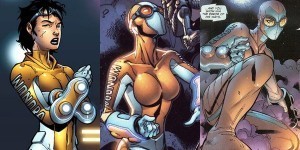 The cool aspect of this storyline is that Jubilee didn’t lie down and choose a “normal” life without her powers. First, she was seen running a halfway house for depowered mutants, helping others get back on their feet. Later, she got hold of a pair of technological super-strength wonder gauntlets and powered herself the hell up, joining the New Warriors under the name “Wondra.” I kind of love this part, and wish I’d read some of her appearances as Wondra – I particularly like the fact that all the wikis I read discussing this period refers specifically to the fact that Jubilee is now strong enough to lift a freight train.
The cool aspect of this storyline is that Jubilee didn’t lie down and choose a “normal” life without her powers. First, she was seen running a halfway house for depowered mutants, helping others get back on their feet. Later, she got hold of a pair of technological super-strength wonder gauntlets and powered herself the hell up, joining the New Warriors under the name “Wondra.” I kind of love this part, and wish I’d read some of her appearances as Wondra – I particularly like the fact that all the wikis I read discussing this period refers specifically to the fact that Jubilee is now strong enough to lift a freight train.
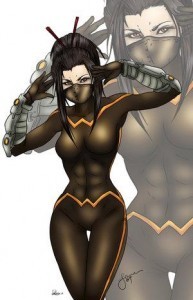 And then she becomes a vampire. Yes, just like that. Sure, a vampire created by a bio-engineered virus, but still a vampire. She didn’t even get the fun part of being bitten by Mr Tall, Dark and Handsome! Rest assured, though, Jubilee is now as broody, angsty and cranky as one might expect a teenage girl vampire to be – and at least now there’s a reason for her to stay the same age forever?
And then she becomes a vampire. Yes, just like that. Sure, a vampire created by a bio-engineered virus, but still a vampire. She didn’t even get the fun part of being bitten by Mr Tall, Dark and Handsome! Rest assured, though, Jubilee is now as broody, angsty and cranky as one might expect a teenage girl vampire to be – and at least now there’s a reason for her to stay the same age forever?
Bah.
I know these posts are intended to be (mostly) positive, but I’m not happy about this one. Jubilee was a fun, light-hearted character, and her mutant power was symbolic of her name and her personality. Stripping her of that power severely harmed her identity, and how can a superhero become iconic if no one quite knows who or what they are?
She might be still wearing a yellow coat and pink sunglasses, but she doesn’t feel like Jubilee any more. Even her role as Wolverine’s student has been eclipsed by, well, just about everyone else in the Marvel Universe, but particularly characters like Armor and X-23. The only obvious improvement I can see in the way she is being portrayed is that her Asian heritage tends to be more evident in the artwork depicting her, as compared to the early days which was often so subtle that you could easily assume she is supposed to be white.
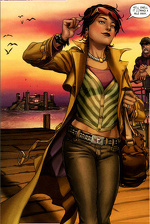 The treatment of her character arc, however, or lack thereof, is such a shame, because Jubilee’s superhero name didn’t include a -girl or a -kid. It was a contraction of her real name that happened to make an awesome, powerful and symbolic noun. Jubilee didn’t need to develop into an Oracle or a Nightwing to shed her teenage image – she could have been Jubilee forever if only the Marvel writers had figured out how to let her grow up, and grow into herself, without losing too many pieces of who she was when she started out.
The treatment of her character arc, however, or lack thereof, is such a shame, because Jubilee’s superhero name didn’t include a -girl or a -kid. It was a contraction of her real name that happened to make an awesome, powerful and symbolic noun. Jubilee didn’t need to develop into an Oracle or a Nightwing to shed her teenage image – she could have been Jubilee forever if only the Marvel writers had figured out how to let her grow up, and grow into herself, without losing too many pieces of who she was when she started out.
But you know, it’s comics. Where there’s life (and sometimes not even then), there’s hope. Someday, Jubilation Lee might start blowing things up again. And who says a vampire can’t have mutant powers and wear a bright yellow coat at the same time?
The sunglasses still work.
Or I could just go and watch more episodes of the 90’s animated X-Men series. Yes. There’s always that.
Where the Wonder Women Are:
0: Introduction
1: Black Canary
2: Rogue
3: Hawkgirl/Hawkwoman
4: Black Widow
5: Wonder Girl
6: Captain Marvel
7: Vixen
8: Abigail Brand.
July 26, 2012
Friday Links Can Fly The TARDIS Better Than You
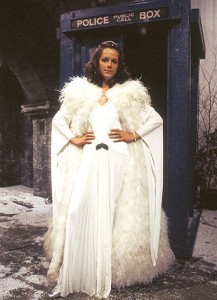 Here we are at the end of another week. The sad news is that Mary Tamm, the original Romana of 1970′s Doctor Who, died of cancer yesterday at the age of 62. Another piece of my childhood crumbled away, and I have been very touched to see the many tributes on Twitter by Doctor Who cast, crew, podcasters and other personalities, many of whom knew her very well and are going to miss her heaps.
Here we are at the end of another week. The sad news is that Mary Tamm, the original Romana of 1970′s Doctor Who, died of cancer yesterday at the age of 62. Another piece of my childhood crumbled away, and I have been very touched to see the many tributes on Twitter by Doctor Who cast, crew, podcasters and other personalities, many of whom knew her very well and are going to miss her heaps.
Romana I was one of my earliest heroes. Long before River Song, she was the woman who knew how to fly the TARDIS way better than the Doctor ever did, and got better marks at school too! Farewell, Mary Tamm.
Karen Healey writes about one of her own heroes, children’s author Margaret Mahy, who also died this week. Elizabeth Knox has also written a powerful and heartfelt tribute. I regret not having read any of Margaret Mahy’s amazing young adult fiction until very recently, though I have extremely fond childhood memories of many of her books for younger children. And I just realised my children don’t currently own a copy of the Pirate’s Mixed-Up Voyage. To the Fishpond! [update: WHAT THE HELL OUT OF PRINT YOU SAY????]
John Scalzi “speaks for the geeks” by pointing out the misogyny at play when people like Joe Peacock & CNN criticise attractive cosplaying women for not being authentically geeky enough. “Because here’s a funny fact: Her geekdom is not about you. At all. It’s about her.”
The Mary Sue asks the important question of our age: why is everyone on the Internet so angry?
Zoe Smith, an 18 year old British female weight-lifter took on a Twitter bully who tried to shame her for not looking feminine enough – mostly by mocking him.
Tor.com looks at the legacy of the “anti-princess” that preceded Merida from Brave, and draws attention to the more interesting, dynamic and morally ambiguous women of Disney movies who are not considered top-tier Disney Princesses (or even princesses at all within the brand).
Joanna Page from Gavin & Stacey has “launched a stinging attack” on British TV’s reality show “Superstar,” pointing out the many ways in which the show insults actual trained and experienced musical theatre performers and belittles their industry by offering a plum role in a new production of Jesus Christ Superstar as a prize in a contest. Good on her for articulating the frustration I imagine many professionals have with this kind of reality TV, where the career they have worked at for decades is presented as something that can be handed out like candy. [link from @thenicolabryant]
Hoyden About Town on why superhero cartoons are better for kids than Bob the Builder.
The awesome Random Alex has written up her review of Reign of Beasts, the third book of my Creature Court trilogy – it never ceases to be a relief when someone expresses satisfaction with Book 3!
Fablecroft are running a book giveaway on Goodreads for children’s SF & Fantasy anthology Worlds Next Door.
Sarah Rees Brennan on writers being friends with other writers.
The SF Mind Meld looks at Monarchies in SF/Fantasy worlds.
I love a bit of Ancient Roman news, especially when it involves my sweet sinister Agrippina the Younger. Mary Beard talks about the problem of sorting out which Agrippina is which, when dividing up the statues.
Justice Larbalestier takes on the myth that YA authors are in it for the money, by pointing out how laughable the concept is that any writer would think writing was somehow an easy route to pots of gold.
July 25, 2012
Where the Wonder Women Are: #8 Abigail Brand
Abigail Brand is harder than you.
Abigail Brand is mean to everyone she knows, even (especially) those she cares about.
Abigail Brand is damned good at her job.
“We came, we saw, everything caught fire and we ran the %# away-”
Created by Joss Whedon in Astonishing X-Men, Abigail Brand represents the extraterrestrial defence force S.W.O.R.D., an offshoot of homeland defence force S.H.I.E.L.D. She’s a green-haired, tough-talking half-alien space agent who doesn’t suffer fools, shouts her way out of every problem, and is totally hot for Hank McCoy (Beast).
After also appearing in the Secret Invasion storyline, Brand had her own series, collected in S.W.O.R.D: No Time To Breathe in which she leaps from one intergalactic catastrophe to another, dragging Beast and tiny angry dragon Lockheed in her wake as she battles bureaucratic red tape, giant robot bounty hunters, and a sinister plot to banish all aliens from Earth.
Sadly the series was cancelled after 5 issues, but it wraps up beautifully as a self-contained story and is definitely worth reading – as of course is the Joss Whedon & John Cassaday run of Astonishing X-Men, of which Abigail Brand is just one of many, many joyful and wonderful aspects. The development of her relationship with Beast is funny and irreverent, and she never lets it get in the way of doing her job.
Brand is such a vivid character that I assumed she was someone like Maria Hill or Nick Fury who had been around the Marvel Universe and then some – it was only when I started researching her that I realised I had read almost all of her major appearances in the comics. This never happens! I am, however, overdue to gread Marvel Heralds, which is mentioned nowhere on Wikipedia but does feature Brand alongside other prominent Marvel women on its cover.
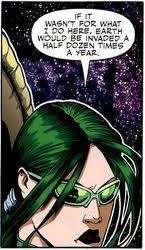 Brand does, however, make appearances in a couple of different Marvel animated series in which, among other things, she punches out Hank Pym (Ant Man).
Brand does, however, make appearances in a couple of different Marvel animated series in which, among other things, she punches out Hank Pym (Ant Man).
I’m sorry to hear that there isn’t more Abigail Brand awesomeness that I can read right now, but such a snarky and kickass space-based character won’t be left on the shelf of neglected Marvel women for long, right? RIGHT?
I have faith that her greatest and most sarcastic adventures are still to come. So, Marvel? BRING IT.
Where the Wonder Women Are:
0: Introduction
1: Black Canary
2: Rogue
3: Hawkgirl/Hawkwoman
4: Black Widow
5: Wonder Girl
6: Captain Marvel
7: Vixen
8: Abigail Brand.
Sexing Up the Classics
According to the Huffington Post, the “zombies and” phenomenon of doctoring classic novels with with addition of monsters and horror tropes has moved on to a new technique, publishing versions of Austen and the Brontes which have extra sex scenes inserted into the text.
Mr Darcy was not aware that his novel was not sexy enough. You made Mr Darcy sad.
I don’t agree that publishing X-rated versions of classic novels is worse than adding zombies and seamonsters to them. I think it’s exactly as bad.Thanks to @editormum who pointed this out to me on Twitter, comparing the real life publishing antics to a story I wrote for the Sprawl anthology a couple of years ago, in which the publishing and bookselling world allowed customers to buy and print books on the spot, espresso machine style, but also to choose variations of the text as standard options. When I wrote “Relentless Adaptations” at the beginning of the “Pride and Prejudice and Zombies” hype machine, I was on the fence as to whether this was a good or bad thing for books.
On the one hand, it was a clever and funny concept, and everyone was talking about it. Pride and Prejudice had sudden SF geek cred instead of just book geek cred. The Sense and Sensibility and Seamonsters book trailer had been recently released and was hilarious. This was I think before the actual books were released, for the most part at least, proving that the only funny thing about the concept was, well, the concept, not than the execution, and that the whole range would have been better released as a series of fridge magnets and t-shirts rather than actual books.
But I was still on the fence. As an author I love playing with the works of others, and I absolutely agree that works should go out of copyright, and that they should become fair game for other creative people to pick up the concepts and characters, play with them, and take them apart to see what works. As a reader, I love many works that do this excellently, from retellings like Clueless and 10 Things I Hate About You to the many short stories, graphic novels and other media that interrogate Oz, Wonderland or Narnia.
Hey, I’m still writing a Romeo and Juliet and necromancers novel, I’m not an innocent here!
Heathcliff would like to state for the record that if you don’t think he’s getting plenty of nookie in Wuthering Heights, you weren’t reading the book closely enough.
In the case of Austen and the Brontes, I think it would be great fun to read a book of erotica based on the classic novels. I wouldn’t have a problem about that at all. But there’s something quite creepy and invasive about the idea of publishing the actual text of the original novel, with fictive alterations. I get upset enough about the character names in Enid Blyton novels being changed. But the idea of inserting sex scenes between the characters into the REAL text of the original novel… well, it’s just as bad as tucking zombies and sea-monsters in there.If anything, this new development is slightly mitigated in my mind because what it isn’t (which the “and zombies” phenomenon most definitely was) a case of modern male authors appropriating the work of classic female authors, which was an aspect of “and zombies” which made me very uncomfortable. There are so few female authors of classic literature who have managed to survive academic snobbery and “the canon” and thoughtless, gender-biased readers to continue to be remembered, and the idea of male authors taking the best of them over and adding zombies and vampires to make them “cool” did creep me out a bit. It didn’t make it any better when a friend who is also a bookseller pointed out that he had sold massively more copies of Pride and Prejudice to men over the last 2 years than he ever had before, purely because of “and zombies.”
The idea that Pride and Prejudice and Zombies might be someone’s first introduction to the work makes me feel exceedingly uncomfortable. And yet I wouldn’t feel the same way about a movie based on that concept. The same goes for a “sexed-up” version of one of the classics. I might not love the idea, mostly because I don’t believe you can credibly allow characters to have sex without radically changing everything else that happens in the story, but I don’t think I’d disapprove of a sexytimes movie version of Wuthering Heights or Sense and Sensibility, especially if it was very clear that the creators were aware they were taking liberties with the text. Let’s face it, the last filmed Pride and Prejudice took some massive liberties – and many purists hated it, but many more people adored it. I prefer my P&P BBC style, but that doesn’t mean I’m going to get overly outraged by people who prefer Keira Knightley to Jennifer Ehle. Films often choose to appeal to a modern audience over sticking to the constraints of the text, and that’s a reasonable choice to make.
But these Classics With Sex Scenes don’t come with any particular awareness or humility, apparently. The publisher in question, Claire Siemaszkiewicz, seems to think that it was only historical mores stopping the Bronte sisters from producing erotic romance… and maybe that’s true. But the fact is, they didn’t write those scenes. Emily Bronte did not come back from the grave with a notebook full of Hareton/Lockwood slash sticking out of her back pocket and hand it over with a cheerful wink.
(Though if anyone wants to write a story about that happening, I would totally read it)
The Misses Dashwood are not going anywhere until you read them a Hareton/Lockwood fic.
It’s not the porn aspect that’s a problem here – at least, I certainly don’t feel that it is a problem of itself. It’s just that the fact that it’s sex instead of violence is making more people sit up and take notice and realise the thing that should have been obvious all along – that adding scenes to someone else’s book is just plain weird.Fiction is a historical as well as a literary document, and these publishers and their hired hacks are doing something very invasive to that document. Unless the remodeled novels clearly indicate where the original leaves off and the fakery begins, I think it’s really quite disingenuous to present the original authors as co-creators in this new moneygrabbing enterprise. They’re not.
Write your super-sexy version of Wuthering Heights, by all means, but don’t pretend that you’re doing so with the permission of the original author, or that you can now claim equal billing with Emily Bronte on the cover of her own damn book.
July 22, 2012
Where the Wonder Women Are: #7 Vixen
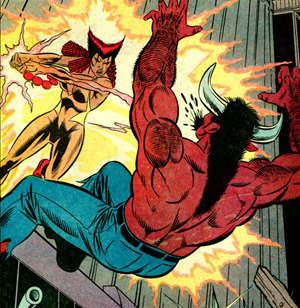 A lot of things happened to comics in the 1980’s. Hair got bigger, costumes got smaller, ‘gritty’ became the order of the day (and some of the best funny comics of all time were created as a counterpoint) and of course, in DC-Land there was the Crisis to Start All Other Crises.
A lot of things happened to comics in the 1980’s. Hair got bigger, costumes got smaller, ‘gritty’ became the order of the day (and some of the best funny comics of all time were created as a counterpoint) and of course, in DC-Land there was the Crisis to Start All Other Crises.
But also, there was Justice League Detroit.
In the lead up to the Crisis on Infinite Earths (1985), DC Comics addressed the issue of having its premier team book (Justice League America) made up of so many characters who also had their own title, by showing most of the heroes fail to arrive in time to help the Earth against a Martian attack. Among other disastrous results of this battle, the Justice League Satellite that had been their headquarters for nearly 15 years was destroyed.
Original founder Aquaman was so furious at this (and possibly also cranky that he didn’t have his own book) that he disbanded the group and set up a new charter, with only those superheroes who could dedicate their “full time” to the Justice League allowed to join. Have you spotted the potential problem with this concept? Oh, yes. The new team was made up entirely of superheroes who were not well known enough or popular enough to have their own titles (Martian Manhunter, Zatanna, Aquaman, Elongated Man), along with a bunch of new superheroes no one had ever heard of. Not exactly a formula for successful comics sales…
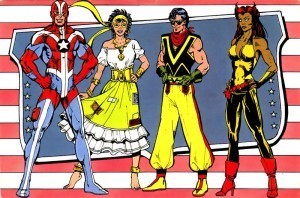 The new heroes who formed the core of this rebooted version of the Justice League were teenagers: Steel, Vibe, Gypsy and Vixen. Between them they summed up everything that was hot and cool and ‘now’ in 1984, and thus they became the most rapidly dated superhero team of all time.
The new heroes who formed the core of this rebooted version of the Justice League were teenagers: Steel, Vibe, Gypsy and Vixen. Between them they summed up everything that was hot and cool and ‘now’ in 1984, and thus they became the most rapidly dated superhero team of all time.
Within three years the team (whose headquarters were a military installation/warehouse in Detroit) had failed to attract readers, even with the late addition of Batman to the roster, and a small massacre was arranged to trash, demoralise and disassemble the team. I have a bit of a soft spot for this era, having read it when the 80’s were a lot more recent than they are now. The writers were trying some things that were admirable, in challenging how a super team should work, and had also added some non-white characters to the DC Universe, specifically the young Latino hero Vibe and African heroine Vixen.
Interesting to note that the kids killed off to bring the team to an end were Vibe and Steel, the two male original characters, while fellow newbies Vixen and Gypsy (along with their leader the Martian Manhunter and magician Zatanna) were the ones who had to deal with the emotional fallout. That isn’t the way it tends to be done these days…
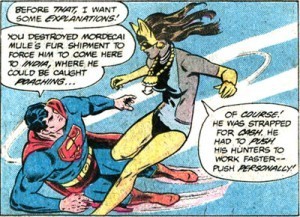 Of these four original Detroit heroes, Vixen (Mari Jiwi McCabe) is the one who has proven to have the most consisten popularity (though Gypsy made at least one more reasonably successful Justice League comeback). Never a high profile superhero, Vixen has continued to turn up from time to time in the DC Universe, including a speaking role in the animated series Justice League Unlimited, and her own comics mini-series exploring her African origins and the nature of her superpowers. She even managed to secure a position in the New 52, which is more than can be said of many female characters in the DC Universe.
Of these four original Detroit heroes, Vixen (Mari Jiwi McCabe) is the one who has proven to have the most consisten popularity (though Gypsy made at least one more reasonably successful Justice League comeback). Never a high profile superhero, Vixen has continued to turn up from time to time in the DC Universe, including a speaking role in the animated series Justice League Unlimited, and her own comics mini-series exploring her African origins and the nature of her superpowers. She even managed to secure a position in the New 52, which is more than can be said of many female characters in the DC Universe.
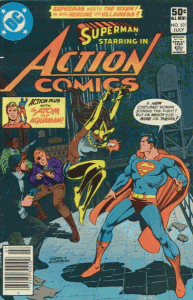 Vixen was in fact not an original character devised for Justice League Detroit – she was introduced in Action Comics back in 1981, and as early as 1978 had been intended to be the first black female superhero to star in her own series before she got caught up in “the DC Implosion,” a sudden cancellation of more than two dozen planned and ongoing comics titles which was blamed on blizzards. And people not buying enough comics. And paper being more expensive. But mostly, blizzards.
Vixen was in fact not an original character devised for Justice League Detroit – she was introduced in Action Comics back in 1981, and as early as 1978 had been intended to be the first black female superhero to star in her own series before she got caught up in “the DC Implosion,” a sudden cancellation of more than two dozen planned and ongoing comics titles which was blamed on blizzards. And people not buying enough comics. And paper being more expensive. But mostly, blizzards.
Mari Jiwi McCabe was born in a village in Zambesi, a fictional African nation, and inherited a warrior tradition passed down through her family since ancient times, and originally bestowed upon them by Anansi the Spider. Mari has the power to mimic or express the abilities of any animal that has ever lived on earth. A great deal of her backstory was explored through her appearances in the title Animal Man, who has similar powers and may have received them from the same original source.
Mari/Vixen can tap into the Earth’s morphogenetic field, which she often calls ‘the Red.’ This allows her to focus on a specific animal in order to use its abilities. She wears her family talisman, the Tantu Totem, which features the head of a female fox. Mari travelled to the US originally to become a fashion model (and fight crime!). The move seems like an odd choice given the lack of convenient powerful animals in cities, but her totem allows her to connect to animals over a long range, so that’s OK.
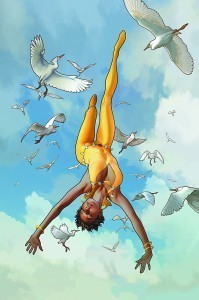 Mari’s Vixen costume has changed over the years but is usually some variation of a sleek yellow jumpsuit. Her hair is usually cropped short, though she had a memorable oh-so-80’s braided triangular do in her Justice League Detroit days, and in her very first appearances, even wore an animal mask.
Mari’s Vixen costume has changed over the years but is usually some variation of a sleek yellow jumpsuit. Her hair is usually cropped short, though she had a memorable oh-so-80’s braided triangular do in her Justice League Detroit days, and in her very first appearances, even wore an animal mask.
Some time after the dissolution of Justice League Detroit, Vixen was a regular part of Suicide Squad, under the control of Amanda Waller, and became romantically involved with Bronze Tiger (three black speaking roles in a single comic, don’t faint, anyone!). She also took part in one of my very favourite Justice League Task Force adventures, in which J’Onn J’Onnz formed an all-female team (including himself, as Martians can change gender appearance at will) to travel into the deepest jungle and save a man called Haggard from an angry matriarchal tribe of green ladies. Okay, it sounds dreadful but honestly, it was hilarious and awesome, and I refuse to re-read it now to check on its suck fairy status. Because I trust it. Ahem.
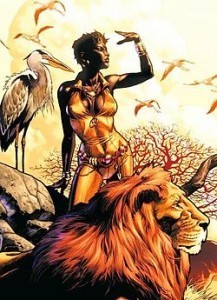 Vixen also made appearances in Birds of Prey, and returned to Justice League of America (Vol 2) when it was revamped after the 2006 event One Year Later. She even had a storyline that revolved around her own powers, and explored the ramifications of Anansi being the originator of those powers. In Vixen: Return of the Lion (her own mini-series!), Mari returned to her home village and went up against a warlord who killed her mother years ago, and has powers equal to or greater than her own.
Vixen also made appearances in Birds of Prey, and returned to Justice League of America (Vol 2) when it was revamped after the 2006 event One Year Later. She even had a storyline that revolved around her own powers, and explored the ramifications of Anansi being the originator of those powers. In Vixen: Return of the Lion (her own mini-series!), Mari returned to her home village and went up against a warlord who killed her mother years ago, and has powers equal to or greater than her own.
Then came the New 52 and Justice League International. I’ve been saving up my Justice League International rant for some time, and today may well be that day. I was looking forward to this book. Justice League International was my favourite Justice League in the late 80′s-early 90′s, thanks to a successful mash up of popular and obscure superheroes (they got the formula right that simply didn’t gel in Justice League Detroit), funny scripts and great team dynamics.
Most recently, the brilliant mini-series Justice League Generation Lost had reunited a bunch of the old JLI characters to great effect, with strong art and powerful writing. The New 52 title Justice League International seemed set to continue what had been done so well in JLGL, and established a team of international characters to honour the concept behind the book, including Fire of Brazil and Ice of Norway, August General in Iron of China, Godiva of um the Planet Cockney, a new Rocket Red from Russia, and Mari Jiwi McCabe: Vixen, of Africa. (plus Booster Gold and Guy Gardner, representing the American patriarchy) The artist was Aaron Lopresti, also of JLGJ, who draws some of the best superhero women in the business – he often gets forgotten while everyone is singing the praises of such standout artists as Amanda Conner or Cliff Chiang, but Lopresti draws great, active and strong women. Even the name Dan Jurgens seemed a plus for me, as I remembered enjoying his work on Justice League back in the day (though in retrospect, he did use my favourite babies as cannon fodder for his Death of Superman storyline. Hmmmm.)
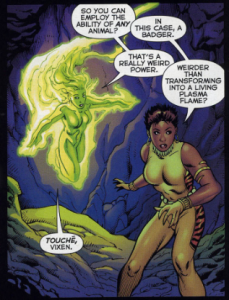 Despite my optimism, this version of the JLI went horribly wrong. The dialogue was flat and dull; the characters, especially the women, were lacking in individuality. I don’t know how you manage to make Vixen, Fire and Ice lack personality, but it happened in issue after issue. Then came the worst point, the explosion of the United Nations building. Yes, the one character killed off to make it feel like a Serious Moment was male. But I was still outraged by the fact that every SINGLE woman in the team was carried out of the explosion, unconscious or otherwise, by their male counterparts. It was one of those mysterious bombs that mostly targets women.
Despite my optimism, this version of the JLI went horribly wrong. The dialogue was flat and dull; the characters, especially the women, were lacking in individuality. I don’t know how you manage to make Vixen, Fire and Ice lack personality, but it happened in issue after issue. Then came the worst point, the explosion of the United Nations building. Yes, the one character killed off to make it feel like a Serious Moment was male. But I was still outraged by the fact that every SINGLE woman in the team was carried out of the explosion, unconscious or otherwise, by their male counterparts. It was one of those mysterious bombs that mostly targets women.
One female character from the team, Godiva, was walking around afterwards, while Fire, Ice and Vixen were all hospitalised in comas. GODIVA, whose power is having magical hair, was carried out but mostly unharmed, while the women whose powers are: being an ice goddess, turning into a body entirely formed of flame, and having all the strength/speed/abilities of any animal you can choose (and there are some pretty robust ones in the animal world) were all left in hospital beds so the men in their lives could talk over their heads about how worried they were, and whether they should/could protect them from further danger.
I will save my outrage about the poor treatment of Fire and Ice for another day, but let’s talk about Vixen. She is an awesome team-member to have. She’s snarky and smart, she is adaptable, and her powers are only limited by her writer’s imagination. Sadly in this case, the writer fell far, far short of the mark.
And that is why I stopped reading Justice League International, end of rant.
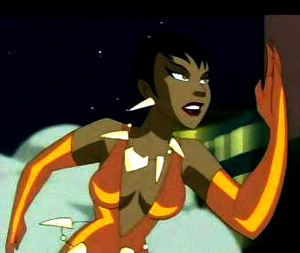 In ‘animated-series-treat-women-better-than-comics’ news, Vixen appeared as a semi regular character in Justice League Universe, voiced by Gina Freaking Torres, and while she was initially brought into the main storyline to be Green Lantern’s New Girlfriend after he broke up with Hawkgirl, the story didn’t fall back on cliche for the sake of cheap conflict. John and Shayera were great together and I shipped them like crazy, but Vixen and John are also great together. Their relationship is repeatedly shown to be calmer and more relaxed than the fire-and-fury thing he had with Shayera. More to the point, Vixen and Hawkgirl become pretty good friends and comrades at arms, putting aside the fact that they like the same boy, and getting on with the Saving the World While Being Awesome job.
In ‘animated-series-treat-women-better-than-comics’ news, Vixen appeared as a semi regular character in Justice League Universe, voiced by Gina Freaking Torres, and while she was initially brought into the main storyline to be Green Lantern’s New Girlfriend after he broke up with Hawkgirl, the story didn’t fall back on cliche for the sake of cheap conflict. John and Shayera were great together and I shipped them like crazy, but Vixen and John are also great together. Their relationship is repeatedly shown to be calmer and more relaxed than the fire-and-fury thing he had with Shayera. More to the point, Vixen and Hawkgirl become pretty good friends and comrades at arms, putting aside the fact that they like the same boy, and getting on with the Saving the World While Being Awesome job.
 The Vixen of the animated series (did I mention Gina Freaking Torres?) only has to touch the totem on her necklace to activate her power, even if she’s on a different planet to the animal she wants to channel, and an image of the relevant animal is briefly superimposed over her to depict this to the viewers. She uses this in inventive, powerful ways, like taking on the mass of an elephant just as she hits an attacker. In Batman: Brave and the Bold, in which she also appears, she also demonstrates the kick of a kangaroo.
The Vixen of the animated series (did I mention Gina Freaking Torres?) only has to touch the totem on her necklace to activate her power, even if she’s on a different planet to the animal she wants to channel, and an image of the relevant animal is briefly superimposed over her to depict this to the viewers. She uses this in inventive, powerful ways, like taking on the mass of an elephant just as she hits an attacker. In Batman: Brave and the Bold, in which she also appears, she also demonstrates the kick of a kangaroo.
One thing’s for sure – while Vixen has still never received her own ongoing series, 34 years after it was first mooted, she’s a character with great usefulness and potential. I want to see her back, fighting fit, now that Justice League International has been rightfully cancelled (I never thought I’d type those words, sob). Birds of Prey, perhaps? She could go team up with her old pal Zatanna in Justice League Dark, or go see what the Martian Manhunter is up to in Stormwatch? The possibilities are endless, as long as someone allows her to use her animal powers of healing to deal with those SPINAL INJURIES AND POSSIBLE PARALYSIS inflicted upon her by Mr Jurgens. Because, you know, the men of Justice League International (including new member Batwing who joined them because he was in town visiting Mari at her hospital bed) really needed to be inspired to do a bit better.
I hate comics sometimes.
In the mean time, I take heart that Vixen has been included as a playable character in the new Lego Batman 2: DC Super Heroes game. My daughter is totally getting that for her birthday.
Where the Wonder Women Are:
0: Introduction
1: Black Canary
2: Rogue
3: Hawkgirl/Hawkwoman
4: Black Widow
5: Wonder Girl
6: Captain Marvel

